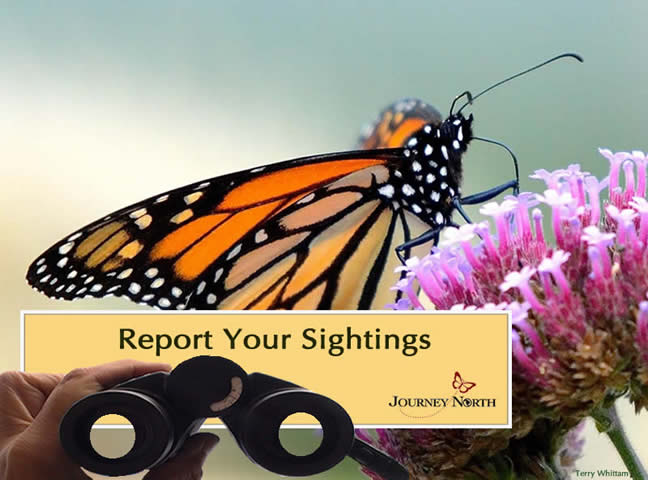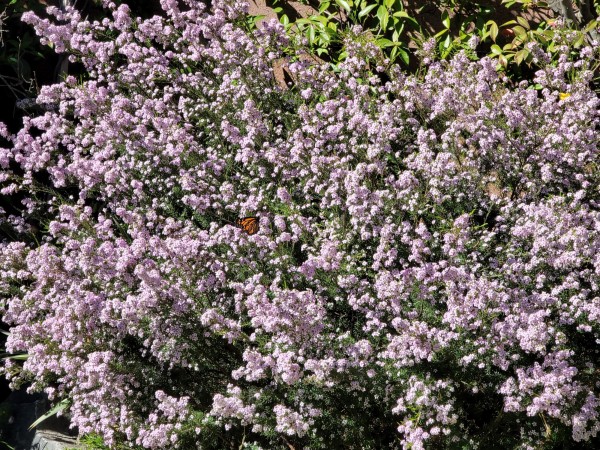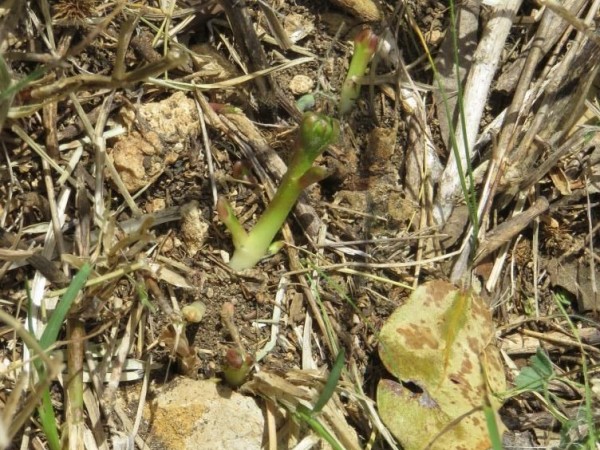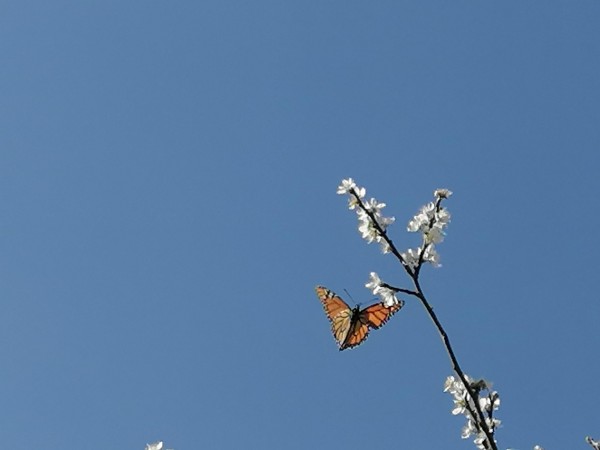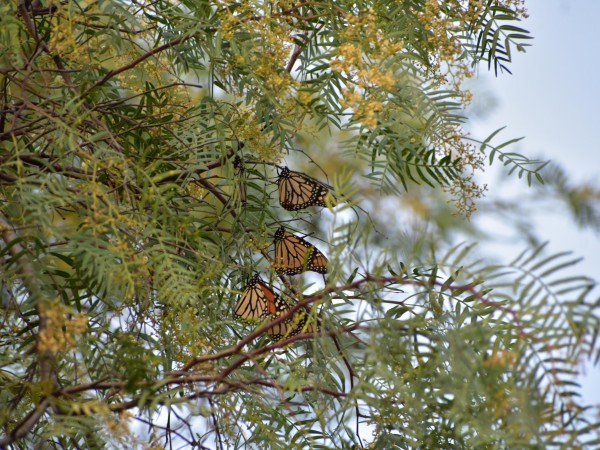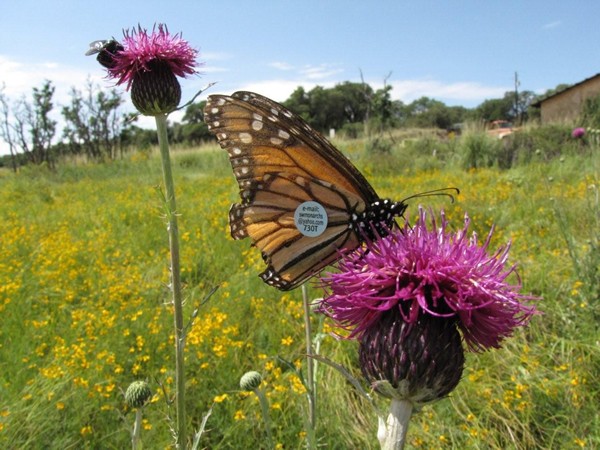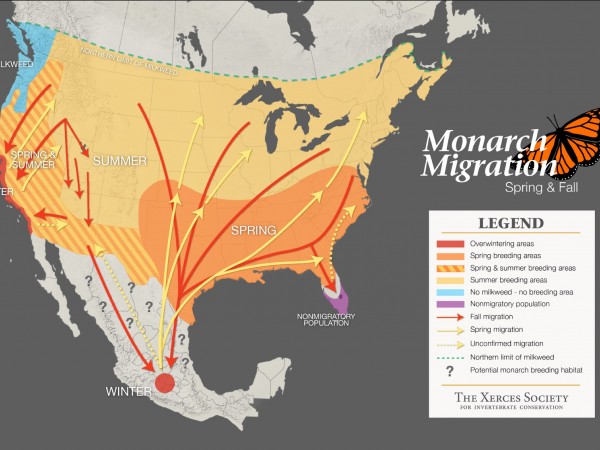Spring Migration Begins
Estela Romero and Ellen Sharp share news of large numbers of monarchs leaving the sanctuaries in Mexico. Gail Morris provides a Western monarch update and details activity in California and Arizona. And with monarchs now migrating north, get ready to report your observations. Spring migration is here!
Letter From Estela Romero: Highlight of the Season
Exciting news from Estela Romero. At Sierra Chincua Sanctuary, monarchs are leaving and heading north. At El Rosario Sanctuary, the colony has relocated just slightly north to La Salud. Estela writes, "The colony has continued to decline. Last week, guides waited to see if the remaining monarchs had relocated. No new locations of the monarch colony was found. The colony has left Sierra Chincua . . . The El Rosario colony relocated, but did not leave. The colony moved from El Rosario to Angangueo’s Ejido and finally settled just at the other side of the La Salud community’s beautiful Oyamel and pine forests."
Read more of Estela Romero's Letter: Highlight of the Season
Leer más de la carta de Estela Romero: Lo Más Destacado De La Temporada
Letter From Ellen Sharp: Early Departure
At Cerro Pelon Sanctuary, Ellen Sharp also highlights departing monarchs. And she reflects on and hopes for a future where monarchs and local communities can thrive together. Ellen writes, ". . . Cerro Pelon’s butterflies have left the sanctuary the earliest we’ve ever seen them do so. By March 5th, the rangers and guardians were still seeing monarchs flying about and mating, but there was no more colony to be found . . . I think that many people care about the monarch migration and its fate, but they fail to apprehend the connection between the well-being of monarchs’ Mexican neighbors and the health of the butterfly forest."
Read more of Ellen Sharp's Letter: Early Depature
Leer más de la carta de Ellen Sharp: Salida Anticipada
Letter from Gail Morris: Western Monarch Spring Report #2
Out West, Gail Morris discusses the surveys of overwintering Western monarch populations in California that continue to show decline. She also reports on monarch activity in California and Arizona. Gail writes, "Last week The Xerces Society released the results of the 2020-21 Western Monarchs New Year’s Counts. Dedicated volunteers counted monarchs at 149 sites and found only 1,039 monarchs . . .Warm and breezy weather this week in portions of California brought new “first sightings” of monarchs along the coast and “first eggs” reports as well. Meanwhile monarchs danced in the desert warmth in southern Arizona looking for mates."
Read more of Gail Morris’ Letter: Western Monarch Spring Report #2
Get Ready to Report Monarch and Milkweed Observations
The Eastern population of migrating monarchs will soon be funneling through Texas and along the Gulf Coast. With the decline in the population of monarch butterflies in Mexico wintering sites and the recent cold snap delaying and killing milkweed growth, it is now more important than ever to report your observations. It is equally important to report your monarch observations if you live west of the Rockies. Results from the 2020-2021 Xerces Society Western Monarch New Year’s Count show continued decline. As Gail Morris reminds us all: "Your reports can help everyone know the 'status of the breeding habitat' where you live. Don’t forget to report any monarchs you may be lucky enough to see!" Please report:
- Monarch Adult (FIRST sighted)
- Monarch Egg (FIRST sighted)
- Milkweed (FIRST sighted)
If possible, please include photos in your reports. Photos provide indicators such as wing condition to help determine if a monarch is migratory or not. Photos are important because it can be challenging to determine if a first observation is actually a migrating monarch and not a monarch that is overwintering or newly emerged.
Reports are already coming in north of the sanctuaries in Mexico and Texas:
Chuck in Driftwood, TX: "I'm finding asperula sprouts about 1/4" to 3/4" in size in areas that typically have early growth. They are somewhat covered by old growth but should be more visible in a week or so." (03/05/2021)
Graciela in San Pedro Garza García, NLE: "Monarch butterfly visiting our plum tree and making our day even more beautiful." (03/04/2021)
Cristina Bernal in Jacala de Ledezma, HID: "From 2:00 pm to 3:00 pm I saw three monarchs. They fed on a mesquite flowers and came from south to north." (03/07/2021; courtesy of Correo Real)
Linda in Port Isabel, TX: "We sighted our first monarch at about 5:00 P.M. on March 7. The temperature was 68 degrees. Sadly, our recent winter storm froze back all the milkweed in our garden and it is just barely beginning to re-emerge." (03/07/2021)

